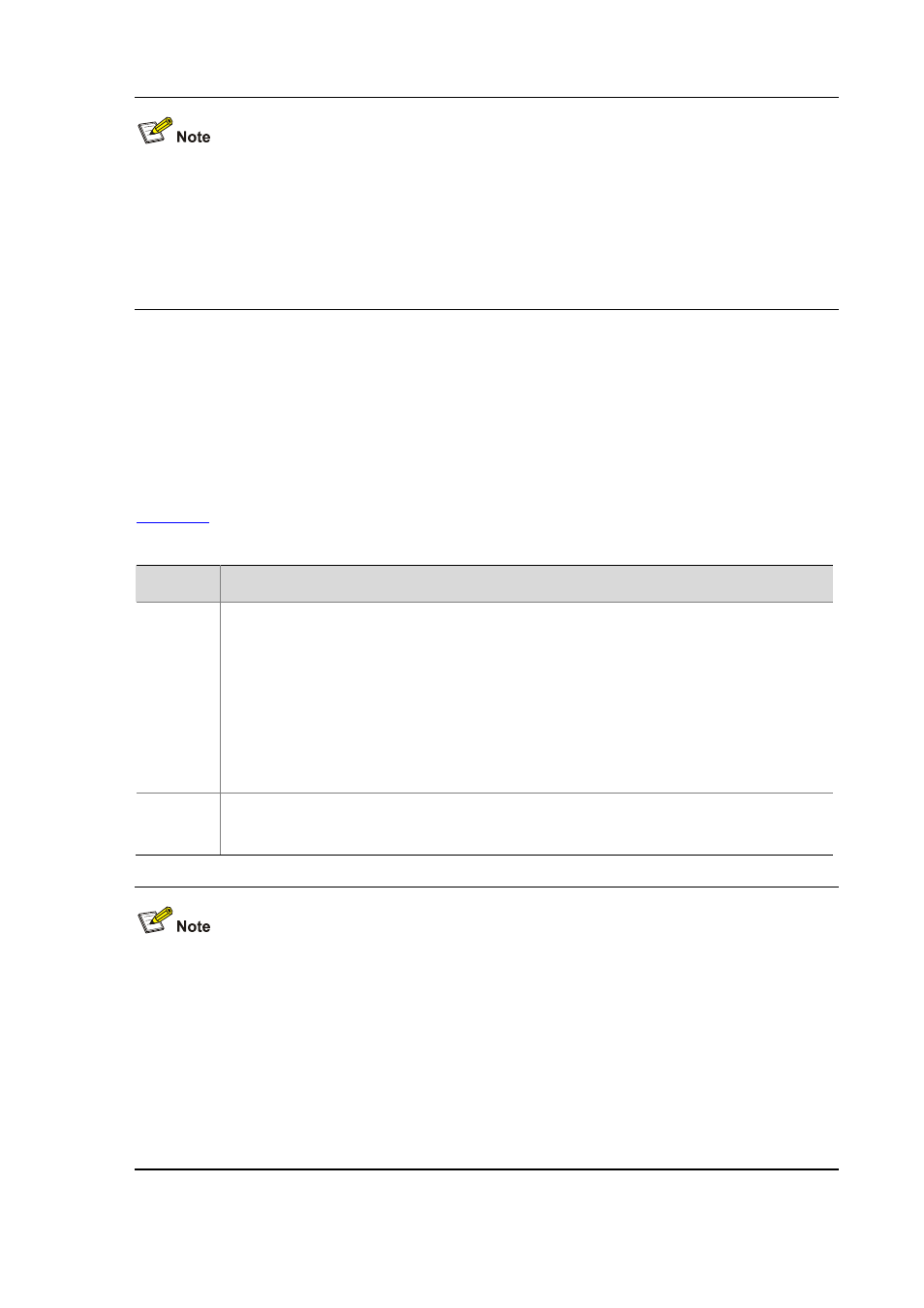Calculation process of the stp algorithm – H3C Technologies H3C S7500E Series Switches User Manual
Page 156

13-4
For simplicity, the descriptions and examples below involve only four fields of configuration BPDUs:
Root bridge ID (represented by device priority)
Root path cost (related to the rate of the link connecting the port)
Designated bridge ID (represented by device priority)
Designated port ID (represented by port name)
Calculation process of the STP algorithm
Initial state
Upon initialization of a device, each port generates a BPDU with itself as the root bridge, in which the
root path cost is 0, designated bridge ID is the device ID, and the designated port is the port itself.
Selection of the optimum configuration BPDU
Each device sends out its configuration BPDU and receives configuration BPDUs from other devices.
describes the process of selecting the optimum configuration BPDU.
Table 13-2
Selection of the optimum configuration BPDU
Step
Actions
1
Upon receiving a configuration BPDU on a port, the device performs the following:
If the received configuration BPDU has a lower priority than that of the configuration BPDU
generated by the port, the device discards the received configuration BPDU and does not
process the configuration BPDU of this port.
If the received configuration BPDU has a higher priority than that of the configuration BPDU
generated by the port, the device replaces the content of the configuration BPDU generated
by the port with the content of the received configuration BPDU.
2
The device compares the configuration BPDUs of all the ports and chooses the optimum
configuration BPDU.
The following are the principles of configuration BPDU comparison:
The configuration BPDU that has the lowest root bridge ID has the highest priority.
If all the configuration BPDUs have the same root bridge ID, their root path costs are compared.
Assume that the root path cost in a configuration BPDU plus the path cost of a receiving port is S.
The configuration BPDU with the smallest S value has the highest priority.
If all configuration BPDUs have the same ports value, their designated bridge IDs, designated port
IDs, and the IDs of the receiving ports are compared in sequence. The configuration BPDU
containing a smaller ID wins out.
